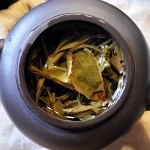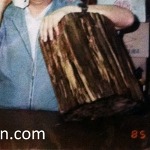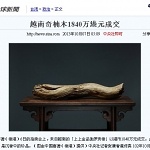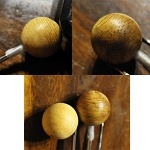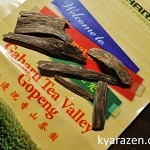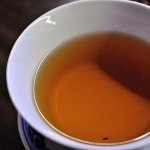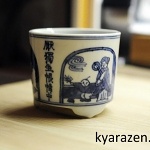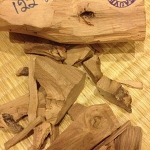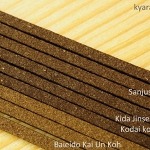Why is Redox (reduction/oxidation) of compounds important in tea? The ancient people had realized that oxidation often resulted in unique and special aromas/fragrances being developed in the tea, that was why oolong teas were born. In the process of making oolong teas, the tea leaves are bruised to allow for controlled oxidation to occur. Similarly, when one drinks some Wuyi Mountain Rock Tea (yan cha), there is… [Read More…]
Agarwood in the 1980s
I thought I would share a couple of pictures which I had requested from Mr Lee (owner of the Kyarazen 1985 oud), to allow people to have a “preview” of what agarwood was like in the 80s. It was not uncommon to have gigantic well resinated woods pass through the hands of Mr Lee as… [Read More…]
What if you have discovered a huge chunk of kyara
Friend called and the conversation went like : AHHHHH!!! HELP!!! I think I just saw a huge chunk of kyara, probably 1 kilogram , and the trader doesn’t know!! Me : What’s the price? Friend : Not confirmed, but possibly below $50 per gram Me : Then WHAT are you waiting for ?!?!??! Friend :… [Read More…]
Agarwood beads
Agarwood beads are amongst the hardest to verify amongst all agarwood related products., This is due to the way the beads are made, spun, polished etc. The ultimate way to verify a bead, is just to split it into half, check the grain, resination, and to heat it on a heater at various temperatures. But… [Read More…]
An Awesome Tea site
It wasn’t easy convincing Mr Teaism to write about tea and tea culture online. At least I think I tried, and many other people too had been encouraging him to, and so he finally agreed! Mr Teaism is a Crouching Tiger, Hidden Dragon in Tea, especially that of Pu-Er Tea and Yixing Purple Clay Teapots. No… [Read More…]
Cultivated Agarwood
Agarwood plantations are common all throughout South East asia today. Some plantations are beginning to reap the fruits of what they had planted a decade ago, and have pushed out a myriad of intriguing agarwood products such as agarwood leaf tea, agarwood cookies, agarwood flavoured instant noodles, wood chips, oils, soaps etc. The strange… [Read More…]
When Pu Erh tea is Poo-Erh
Apologies again for the slow posting this week, been extremely busy with offline activities and several local incense events etc Perhaps just for a breather, I thought I could have a little detour by writing something on pu-erh tea. The internet is abuzz and obsessed with pu-erh tea. If you go onto some popular forums… [Read More…]
The Kodo Cup
I had been a strong advocater of electric heating of fragrantwoods for quite a while. The reason behind this, stems from observation of what society and people need. With high stressed levels, long working hours etc, it is important that they can find quick relief and quick solace. The electric burner fulfils this criteria very… [Read More…]
Processing of Sandalwood in Chinese Incense
If you have been following my youtube channel or some national talkshow i.e. (国学堂) in China, you might have come across the bold assertion that all sandalwood used in incense must be processed. According to them, if the sandalwood is not processed, smelling too much of it will cause one to feel restless from the… [Read More…]
Incense Review – Scents of the Edo Period
In the Chinese Ming Dynasty (1368-1644 AD), the stick incense was invented. Dried herbs were blended, ground into powder, and mixed with binder powder, the powdered bark of the Machilus Thunbergii tree which acts as a glue when wet. The resultant dough could then be extruded or rolled into sticks, and allowed to dry in… [Read More…]
- « Previous Page
- 1
- …
- 4
- 5
- 6
- 7
- 8
- …
- 10
- Next Page »
